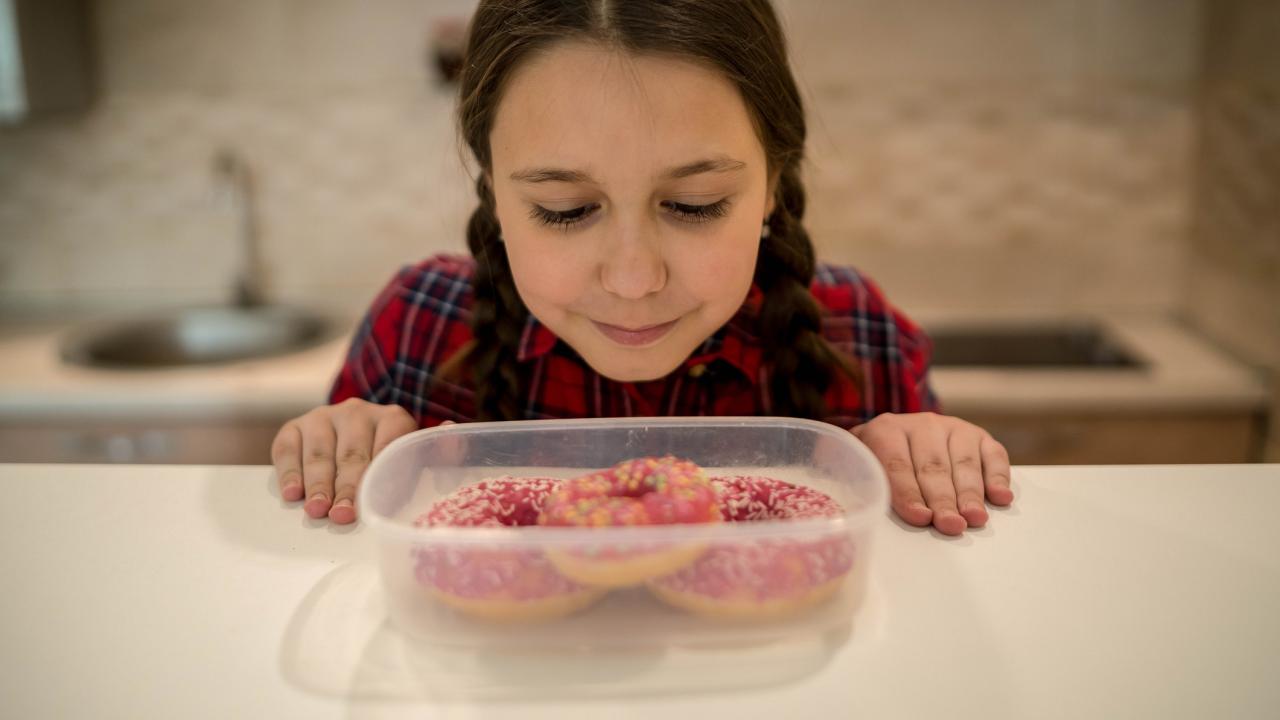Quick Summary
- Children in United States will wait longer for gifts than food, and the opposite is true for Japanese children
- Cultural habits around waiting to eat (emphasized in Japan) and waiting to open gifts (emphasized in the United States) shape distinct profiles of delaying gratification
Overcoming impulses to enjoy here-and-now rewards in order to attain later benefits is fundamental to achieving goals. Such delaying of gratification is often measured by the well-known “marshmallow task” in which children must resist the urge to enjoy one treat now in order to get more treats later.
Individual differences in this task predict important later life outcomes such as academic success, socioemotional competence, and health, many researchers agree.
A study published in June in Psychological Science, co-authored by Yuko Munakata, professor of psychology, and Jade Yonehiro, a graduate student, both in the Department of Psychology and the Center for Mind and Brain at UC Davis, found that cultural habits around waiting to eat (emphasized in Japan) and waiting to open gifts (emphasized in the United States) shape distinct profiles of delaying gratification. Japanese children waited three times longer for food than for gifts, whereas U.S. children waited nearly four times longer for gifts than for food.

“Our findings offer new answers as to why delaying gratification predicts life outcomes and suggest new directions for understanding and shaping children’s delay of gratification,” researchers said in their study.
In the context of eating food, Japanese people are accustomed to waiting. When having meals, Japanese people typically wait until all individuals are served. Such customs of waiting to eat food are not as prevalent in the daily experiences of children in the United States.
In the context of opening gifts, U.S. children may experience waiting more consistently than Japanese children. Giving gifts is a more special event occurring on specific occasions in the United States, such as birthdays and other holidays, that can involve traditions of waiting. In contrast, gift giving is a regular year-round event for Japanese people that is not consistently associated with traditions of waiting.
In the study, 26 U.S. children and 40 Japanese children were in the “food” experiment, and 32 U.S. children and 40 Japanese children were in the “gift” experiment.
Participants in the United States were recruited from a database of families in Boulder, Colorado, and surrounding areas who expressed interest in participating in developmental research. Japanese participants were recruited from a database of families in Kyoto, Osaka, and surrounding areas from a research consulting company.
For the Japanese sample, researchers recruited only participants who had eaten a marshmallow before to ensure that all children were familiar with marshmallows.
The experimenter first placed a marshmallow on a plate or a gift box in front of the child, 4 in. from the table’s edge, and told the child if they could wait for the experimenter to get more marshmallows/gifts from another room, they could have two instead. If the child could wait the full 15 minutes without interacting with the marshmallow or the gift in any way they were rewarded with a second marshmallow/gift.
Japanese and U.S. children showed distinct profiles of delaying gratification. As predicted, culture and reward interacted in children’s likelihood of delaying: Japanese children waited longer for delayed rewards in the food condition (median wait time was 15 minutes) than in the gift condition, where the wait time was almost five minutes.
In contrast, U.S. children showed the reversed pattern. They waited longer for delayed rewards in the gift condition than in the food condition.
“Our findings support a novel perspective that delaying gratification is promoted by the strength of habits of waiting for rewards accumulated in an everyday context, not simply reflecting higher level processes that override temptations,” researchers said.
This perspective raises implications for measurement and interpretation. Delay-of-gratification tasks may measure different psychological processes depending on the rewards and individuals involved. For example, for Japanese children, performance on the classic marshmallow test may mainly reflect the strength of habits of waiting to eat and sensitivity to social conventions. In contrast, their waiting to open a gift might be more influenced by self-control and trustworthiness.
“Our findings also have implications for shaping resistance to temptations,” the report continued. “Groups in each culture have unique social conventions that function to increase cohesion and cooperation. Such conventions require inhibiting behaviors toward personal needs or goals and implementing socially motivated behavior with affiliative functions. In addition, culture-specific parenting values and styles correlate with and may promote children’s delaying of gratification.”
In addition to Munakata and Yonehiro, co-authors include Kaichi Yanaoka, Graduate School of Education, The University of Tokyo; Laura E. Michaelson, American Institutes for Research, Washington, D.C.; Ryan Mori Guild and Grace Dostart, Department of Psychology and Neuroscience, University of Colorado, Boulder; and Satoru Saito, Graduate School of Education, Kyoto University.
Media Resources
Media Contact:
- Karen Nikos-Rose, kmnikos@ucdavis.edu, 530-219-5472
